Intro
Learn about Kawasaki Disease, a rare childhood illness causing inflammation, fever, and rash, with symptoms, diagnosis, and treatment options, including intravenous immunoglobulin and aspirin therapy.
Kawasaki disease is a rare but potentially life-threatening condition that affects children, causing inflammation in the walls of medium-sized arteries throughout the body. The disease is named after Tomisaku Kawasaki, a Japanese pediatrician who first described the condition in 1967. It is also known as mucocutaneous lymph node syndrome, due to the characteristic symptoms of fever, rash, swollen lymph nodes, and inflammation of the hands and feet. Understanding Kawasaki disease is crucial for early diagnosis and treatment, which can significantly improve outcomes for affected children.
The exact cause of Kawasaki disease remains unknown, but it is believed to be an autoimmune disorder, where the body's immune system mistakenly attacks its own tissues. The disease is more common in children under the age of five, and boys are more likely to be affected than girls. Kawasaki disease can lead to serious complications, including coronary artery aneurysms, which can increase the risk of heart problems later in life. Early recognition and treatment of the disease are essential to prevent long-term damage and ensure the best possible outcomes for affected children.
Kawasaki disease is a complex condition that requires prompt medical attention. The disease can present with a range of symptoms, including high fever, rash, swollen lymph nodes, red eyes, and inflammation of the hands and feet. In some cases, children may also experience abdominal pain, diarrhea, and vomiting. The symptoms of Kawasaki disease can be similar to those of other conditions, making diagnosis challenging. A thorough medical evaluation, including laboratory tests and imaging studies, is necessary to confirm the diagnosis and rule out other potential causes of the symptoms.
Kawasaki Disease Symptoms
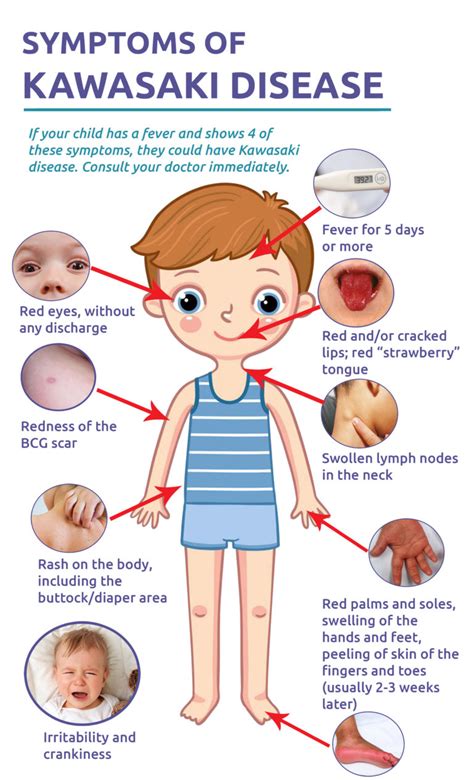
Diagnosis of Kawasaki Disease
Diagnosing Kawasaki disease can be challenging, as the symptoms can be similar to those of other conditions. A thorough medical evaluation, including laboratory tests and imaging studies, is necessary to confirm the diagnosis. The diagnosis is typically based on the presence of at least five of the following six criteria: * Fever for more than five days * Rash * Swollen lymph nodes * Red eyes * Inflammation of the hands and feet * Abdominal pain, diarrhea, and vomiting Additional tests, such as blood tests and echocardiograms, may be necessary to rule out other potential causes of the symptoms and to assess the severity of the disease.Kawasaki Disease Treatment
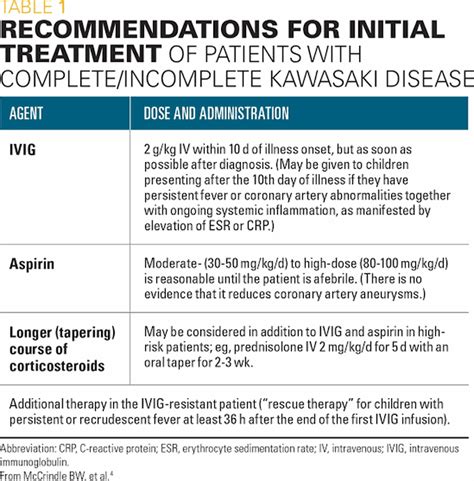
Kawasaki Disease Complications
Kawasaki disease can lead to serious complications, including coronary artery aneurysms, which can increase the risk of heart problems later in life. Other potential complications of the disease include: * Myocarditis, which is inflammation of the heart muscle * Pericarditis, which is inflammation of the sac surrounding the heart * Valvular heart disease, which can occur due to inflammation of the heart valves * Aneurysms, which can form in other blood vessels, such as the arteries in the arms and legsKawasaki Disease Prevention
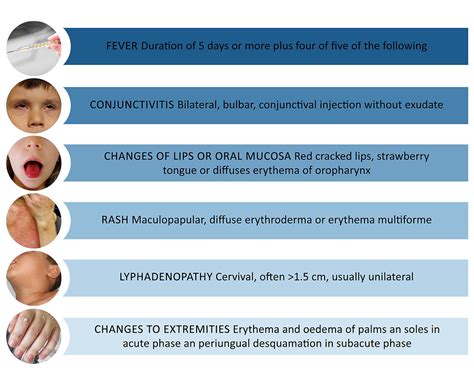
Kawasaki Disease Prognosis
The prognosis for children with Kawasaki disease is generally good, especially if treatment is started promptly. With proper treatment, most children can recover fully from the disease and go on to lead healthy lives. However, some children may experience long-term complications, such as coronary artery aneurysms, which can increase the risk of heart problems later in life. Regular follow-up care with a pediatrician or cardiologist is essential to monitor for potential complications and ensure the best possible outcomes.Kawasaki Disease Research
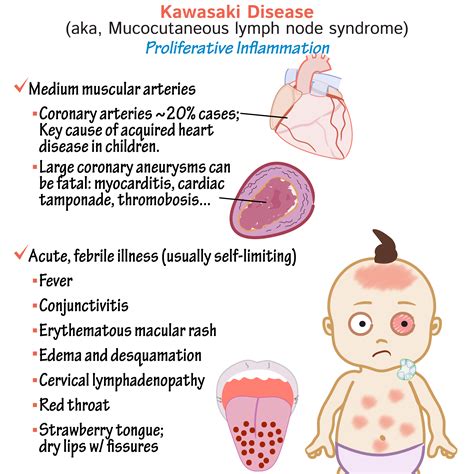
Kawasaki Disease Awareness
Raising awareness about Kawasaki disease is essential to promote early recognition and treatment. Parents, caregivers, and healthcare providers should be aware of the symptoms of the disease and take prompt action if they suspect that a child may be affected. Additionally, supporting research and advocacy efforts can help to improve our understanding of the disease and develop more effective treatments.Kawasaki Disease Support
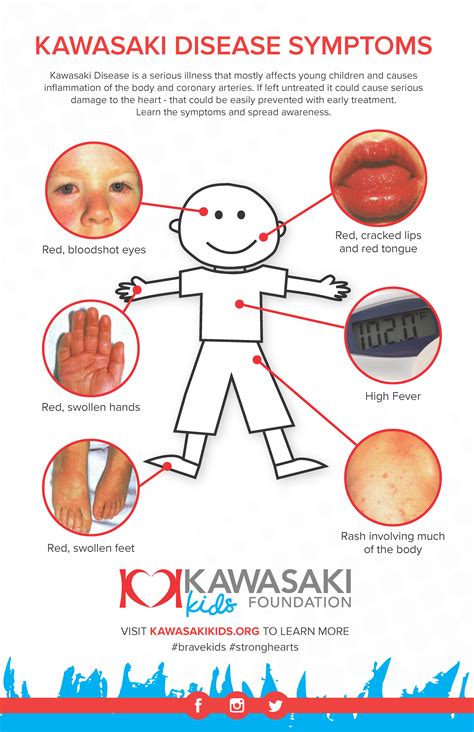
Kawasaki Disease Resources
There are many resources available to support children with Kawasaki disease and their families. These include: * The Kawasaki Disease Foundation, which provides information, support, and advocacy for families affected by the disease * The American Heart Association, which offers information and resources on heart health and Kawasaki disease * The National Institutes of Health, which provides information on research and treatment options for Kawasaki diseaseWhat is Kawasaki disease?
+Kawasaki disease is a rare but potentially life-threatening condition that affects children, causing inflammation in the walls of medium-sized arteries throughout the body.
What are the symptoms of Kawasaki disease?
+The symptoms of Kawasaki disease include high fever, rash, swollen lymph nodes, red eyes, and inflammation of the hands and feet.
How is Kawasaki disease treated?
+Treatment for Kawasaki disease typically involves a combination of medications and supportive care, including intravenous immunoglobulin, aspirin, and corticosteroids.
We hope this article has provided you with a comprehensive understanding of Kawasaki disease, its symptoms, treatment, and complications. If you have any further questions or concerns, please don't hesitate to reach out to your healthcare provider or a support organization. Share this article with others to help raise awareness about Kawasaki disease and promote early recognition and treatment. By working together, we can improve outcomes for children affected by this condition and support families during the treatment and recovery process.
